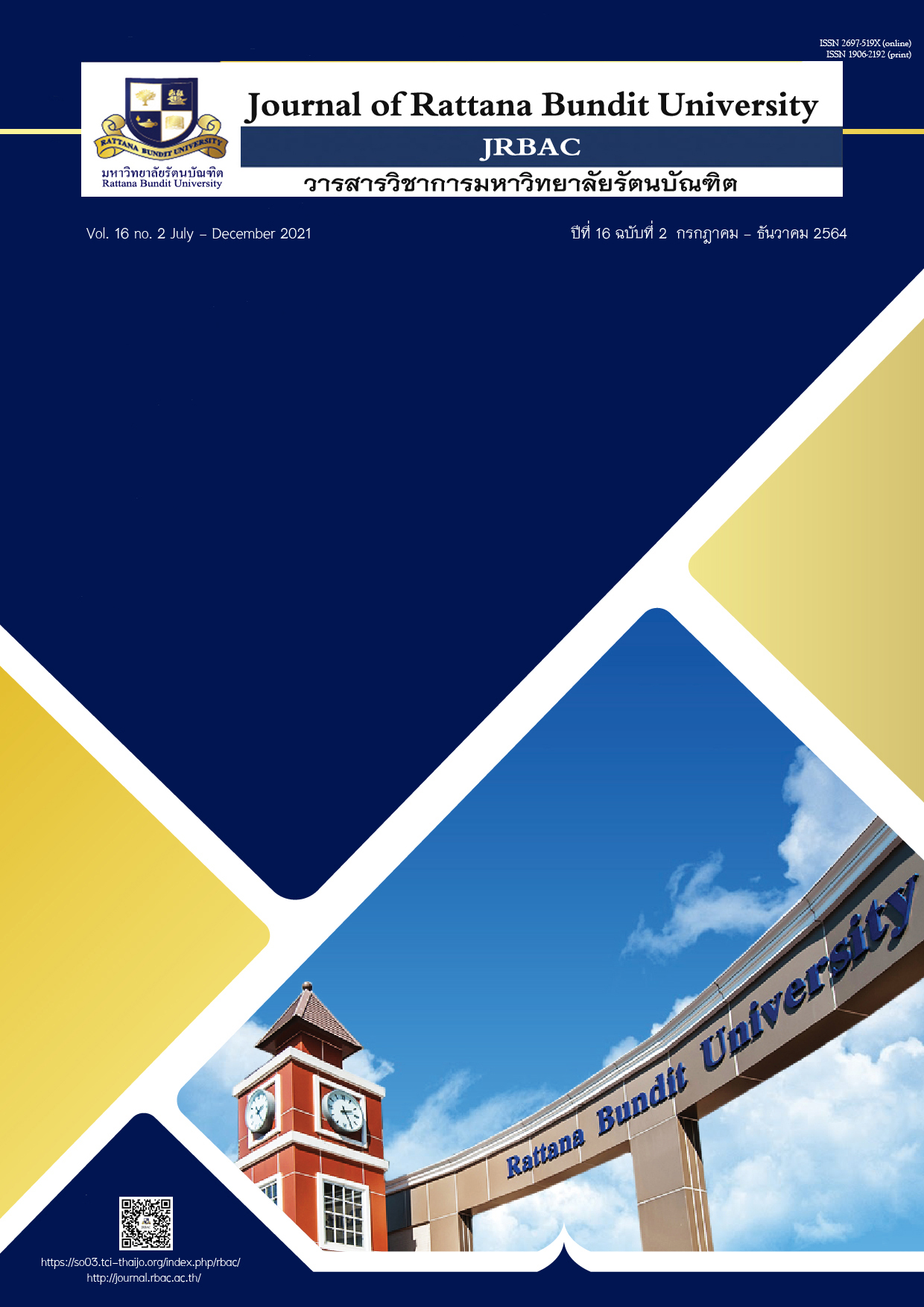Motivation matters: A case study of ESP teaching for a local Thai village working group ความสำคัญของแรงจูงใจ: กรณีศึกษาของการสอนภาษาอังกฤษ เพื่อวัตถุประสงค์เฉพาะให้กับคณะทำงานในชุมชน
Main Article Content
Abstract
In order to explore an effective strategy of English for Specific Purposes (ESP) teaching and learning for a local village working group, this paper aims to shed light on motivations possessed and perceived by the middle-aged local villagers in taking a 32-hour English for Local Activity Presentation course and its consequent positive learning performance. In addition, this study investigates factors that constitute learners’ positive outcomes. The concurrent mixed-method study comprising of multiple instruments for collecting data was operationalized in this study. The findings suggest that learners’ significant motivation was a determined desire to use English benefiting their daily life and current work. The results of this study could be used as a guideline for creating an ESP teaching module and for further research.
Article Details
References
Astaman, A. (2009). Motivating the reluctant language learner. Retrieved from http://lanacometorich.blogspot.com/2009/07/motivating-reluctant-languagelearner.html
Brown, D. H. (2007). Principles of language learning and teaching (5th ed.). Pearson: Longman.
Canlas, S. L., Gaboten, M. P., Mansueto, L. C., Rebutiaco, D. P., Pamintuan, F. C., & Dulalas-Diongon, M. M. (2019). The student's perceptions on mandarin classes and their HSK (Chinese Proficiency Test) results. The Asian ESP Journal, 15(1.2), 34-56.
Cheng, W., & Mok, E. (2008). Discourse processes and products: Land surveyors in Hong Kong. English for Specific Purposes, 27, 57-73.
Creswell, J. W. (2003). Research design: Qualitative, quantitative, and mixed methods approaches (2nd ed.). Thousand Oaks, CA: Sage.
Creswell, J. W. (2009). Research design. Thousand Oaks, CA: Sage.
Creswell, J. W., & Clark, V. L. P. (2009). Research design (2nd ed.). Thousand Oaks, CA: Sage.
Creswell, J. W., & Plano Clark, V.L. (2011). Designing and conducting mixed methods research (2nd ed.). Thousand Oaks, CA: Sage.
Douglas, D. (2013). ESP and assessment. In B. Paltridge & S. Strarfield (Eds.). The handbook of English for specific purposes (pp. 367-384). Boston: Wiley-Blackwell.
Feak, B. C. (2013). ESP and speaking. In B. Paltridge & S. Strarfield (Eds.). The handbook of English for specific purposes (pp. 35-54). Boston: Wiley-Blackwell.
Flowerdew, L. (2013). Needs analysis and curriculum development in ESP. In B. Paltridge & S. Strarfield (Eds.). The Handbook of English for specific purposes (pp. 335-346). Boston: Wiley-Blackwell.
Gardner R. C. (1985). The role of attitudes and motivation. London, Great Britain: Edward Arnold.
Gardner, R. C. (2006). Motivation and second language acquisition: The Socio-educational model. New York, NY: Peter Lang.
Gardner, R. C. 2010. Motivation and second language acquisition (2nd ed.). Vol. 10. New York: Peter Lang.
Handford, M., & Matous, P. (2011). Lexicogrammar in the international construction industry: A corpus-based case study of Japanese - Hong Kong On-site Interactions in English. English for Specific Purposes, 30, 87-100.
Hendricks, A.B. (1997). Predicting student success with the learning and study strategies inventory (LASSI). Retrieved from http://www.sciencedirect.com/science?_ob=MImg&_imagekey=B9853-5016P5K-11G-1&_cdi=59087&_user=10&_pii=S1877042810008335&_origin=&_coverDate=12%2F31%2F2010&_sk=999979997&view=c&wchp=dGLbVlzzSkzk&md5=1ceb56e7b7bdaa626 3d8ac5dcec3b8e9&ie=/sdarticle.pdf
Hewstone, M., Fincham, F. D., & Jaspars, J. M. F. (1983). Attribution theory and research: Conceptual, developmental and social dimensions. London: Academic Press.
Masruddin. (2018). Designing appropriate English learning materials for Syariah economy and Syariah banking study program students at IAIN Palopo. The Asian ESP Journal, 14(4), 42-46.
Onwuegbuzie, A. J., & Johnson, R. B. (2006). The validity issue in mixed research. Research in the Schools, 13(1), 48-63.
Oxford, R. (1999). Variables, individual, in language learning: classroom implications. The Encyclopedia of Language and Linguistics, 9, 4896-4899.
Paltridge, B., & Starfield, S (2013). The handbook of English for specific purposes (Eds.). Boston: John Wiley & Sons.
Phongsirikul, M. (2017). A learner of the 20th century becoming a teacher of the 21st century: A perspective on the goals of ELT in Thailand. rEFLectons, 24, 81-94.
Rod, E. (1997). Second language acquisition. HK: Oxford University Press.
Seifert, T. (2004). Understanding student motivation. Educational Research, 46(2), 137- 49. DOI: https://doi.org/10.1080/0013188042000222421
Srisatidnarakul, B. (2007). Research methodology: Ways to Success (2nd ed.). Bangkok. U&I Intermedia.
Su, S. (2009). Designing and delivering an English for hospitality syllabus: A Taiwanese case study. RELC Journal, 40, 280-313.
Teddlie, C., & Tashakkori, A. (2009). Foundations of mixed methods research: Integrating Quantitative and Qualitative Approaches in the Social and Behavioral Sciences. Thousand Oaks, CA: Sage.
Weiner, B. (1985). An attributional theory of achievement motivation and emotion. Psychological Review, 92(4), 548-573. DOI: https://doi.org/10.1037/0033-295X.92.4.548
Weiner, B. (2010). The development of an attribution-based theory of motivation: A history of ideas. Educational Psychologist, 45 (2010), 28-36.
Zhu, Q. (2014). Motivation for a second or foreign language learning. SHS Web of Conferences. 6, 04004. DOI: https://doi.org/10.1051/shsconf/20140604004


